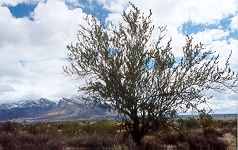|
Gardening Calendar for
the Southwest
Mid-September-mid-November:
Fall at last
PLANTING
Mid-September through October is
prime time to plant. Sow seeds of wildflowers, set out landscape plants from
containers and cool-season annuals such as pansies, petunias, snapdragons
and violas from flats or packs. Many botanic gardens and arboretums, as well
as other agencies sponsor fall plant sales--go early for a wide selection of
water-conserving native plants.) Mid-month, sow seed of cool-season
vegetables such as carrots, peas and green onions. Wait to sow lettuce (or
start seeds in flats for transplanting) until temperatures cool in October.
Mid-September is good time to start a lawn from sod or seed, when soil
temperatures are warm and air temperatures are cooler If you plan to
overseed your Bermuda grass lawn with winter ryegrass, now's the time. Stop
fertilizing Bermuda grass, mow it low (to ½ inch) and sow ryegrass seed.
Water regularly with a fine mist sprinkler.
Soil Preparation. If you didn't improve planting
beds as suggested in August, don't delay. Add organic amendments in
mid-September to get fall gardens ready for planting.
WATERING
Irrigate newly planted plants and
new lawn every day to every few days (depending on high temperatures). For
lawn and wildflowers, use a sprinkler that will apply a fine mist spray so
seeds won't be washed from the soil. As the weather cools, gradually reduce
frequency and increase duration--adding a little more water and a little
more time between each session--as fall blends into winter. Likewise, taper
irrigation of all landscape plants beginning in early fall to ready them for
winter temperatures.
CARE
Fertilize. Early in
September, continue to fertilize hardy landscape plants and lawns. Cease
fertilizing cold-tender plants such as citrus, hibiscus and bougainvillea.
You don't want to encourage fresh, tender growth with cold temperatures
coming in a month or two. Also stop fertilizing deciduous fruit trees to
bring on the dormancy they need.
Combat Animal Pests. Neighborhood birds and
rabbits will love your new plants and seeds as much as you. Sturdy wire
cages (bury wire several inches deep to hold in place) help keep rabbits
out, but don't underestimate their tenacity, especially during periods of
drought. Stake netting, fencing or other screening over newly seeded
wildflowers, annuals and vegetables to deter hungry birds. |
